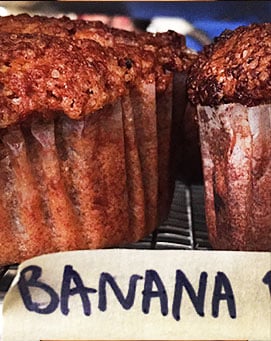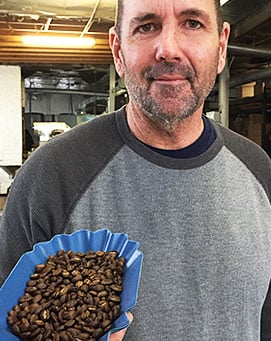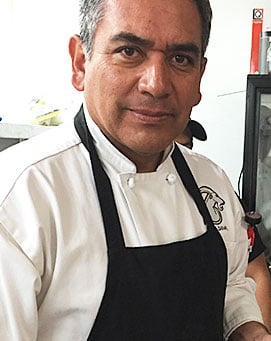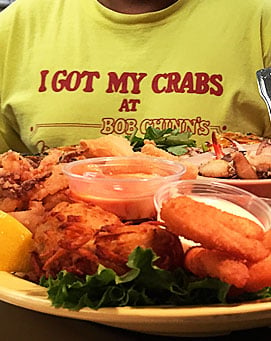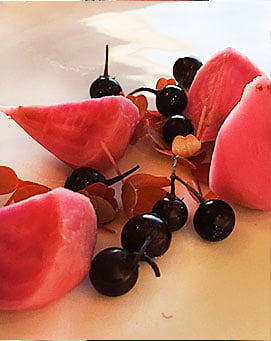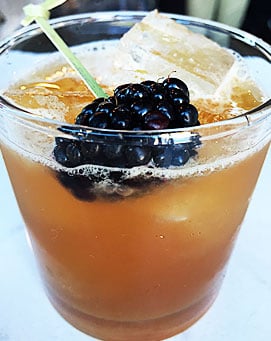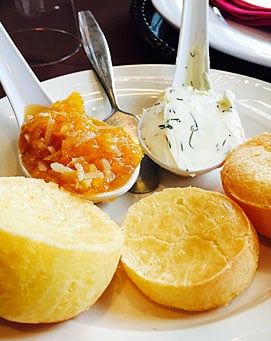Subcontinental Divides
Anupy Singla
Indian chef and cookbook author Anupy Singla explores the diversity of South Asian cuisines on Devon Avenue.
Anupy Singla remembers her first trip to Devon Avenue, a North Side strip in Chicago lined with South Asian shops and restaurants.
 Devon Avenue
Devon Avenue
“I immediately felt comfortable,” she recalls. “It is so much like being in Delhi that my husband refuses to come here on the weekends because it’s just so crazy busy. But the signage, the hustle and bustle in the street, the combination of cultures and subcultures, was something that just really spoke to me.”
Singla, author of several cookbooks, including Vegan Indian, was born in India, and grew up outside Philadelphia. A Chicago resident for 15 years, she’s a frequent visitor to Devon.
“For many of us who are South Asian, it’s a way for us to find things that are connected to our roots, that are accessible right here,” she says. “It’s just a perfect spot to come to get what we need in terms of our day-to-day religious ceremonies or food.”
Singla picks up some of those items at Sukhadia’s, a sweet shop. For holidays like Diwali, she buys desserts such as jalebi, fried dough coated with rosewater-scented syrup, and halva, a carrot dessert. The shop also sells snacks like fried, spiced mung beans, which Singla buys for her kids and serves at parties.
Devon Avenue offers a wide range of South Asian cuisines. Udupi Palace serves specialties from southern India. Rice grows abundantly in that region, so popular dishes include dosas (crisp rice and lentil crepes), idli (steamed rice patties), and vada (fried rice and lentils). Across the street at Tiffin, the focus is North Indian fare, which Singla describes as “the type of food you normally think of when you think of Indian, like butter chicken, tikka masala, naan.” Kamdar Plaza focuses on snacks from the state of Gujarat, where Singla says “they like to combine some sweet elements with savory notes, so oftentimes, they’ll put sugar into certain curries.” There, she orders a thali, a plate of small bites like curries, rice, bread, and pickles.
For many of us who are South Asian, it’s a way for us to find things that are connected to our roots, that are accessible right here.
But the cuisines on Devon aren’t limited to Indian. There are also Pakistani restaurants, like Khan BBQ, which focuses on chicken, beef, and kebabs made in a tandoor oven. While there may be political tension between India and Pakistan, Singla says, “Once we start talking, we actually are aware of more similarities than differences. We find a way here on Devon to be able to sit and have a meal together, regardless of the political differences.”
Devon can also offer non-South Asians an opportunity to better educate themselves about the region.
“The way to do it is to walk into a restaurant and talk to some of the waiters and owners and ask them about their backgrounds and where the food is from,” Singla says. “If you just ask questions, they’re always more than willing to answer, because they love the fact that you’re interested in their culture.”
Dai Makhani Buttered Black Lentils
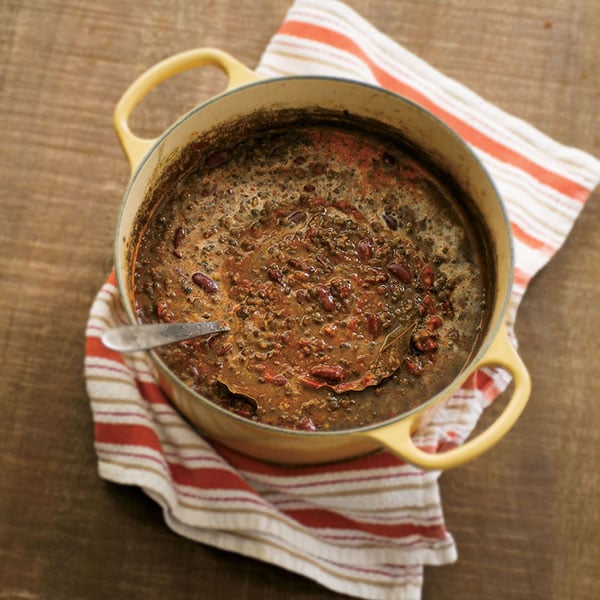
Ingredients:
Yield: 8 cups / 1.9 L
Tools: You’ll need a large, deep mixing bowl; a deep, heavy-bottomed, 6-quart / 6-L stockpot or Dutch oven; a food processor; and an 8-inch / 20-cm sauté pan with a lid.
Veganize It! Substitute vegan margarine for the ghee and Cashew Cream or coconut or soy creamer for the dairy cream.
- 1¾ cups / 360 g sabut urad (whole, dried black dal with skin), picked over and washed
- ½ cup / 90 g rajmah (dried red kidney beans), picked over and washed
- 1 teaspoon turmeric powder
- 2 cassia or bay leaves
- 1 (3-inch / 8-cm) stick cinnamon
- 3 whole cloves
- 12 cups / 2.8 L water, plus more if needed
- 1 medium yellow or red onion, coarsely chopped
- 1 (1-inch / 3-cm) piece ginger, peeled and coarsely chopped
- 4 cloves garlic, peeled
- 4 tablespoons / 60 mL ghee or vegetable oil
- 1 teaspoon cumin seeds
- 1 teaspoon cumin powder
- 1 teaspoon ground coriander
- 1 teaspoon red chile powder or cayenne pepper
- 1–3 fresh Thai, serrano, or cayenne chiles, stems removed and chopped
- 1 (6-ounce / 170-g) can tomato paste, unsalted
- ¼ cup / 60 mL water, plus more if needed
- 1 tablespoon plus 1 teaspoon salt
- ¼ teaspoon cardamom seeds, ground
- 1 teaspoon kasoori methi (dried fenugreek leaves), lightly hand crushed to release flavor
- 1/4 cup / 60 mL half & half or heavy cream
- 2 heaping tablespoons minced fresh cilantro, for garnish
- Brown or white basmati rice, Roti, or Naan, for serving
Directions:
- In a large, deep mixing bowl, soak the sabut urad and rajmah in at least 8 cups / 1.9 L of water overnight. If you’re pressed for time, place them in boiling water and allow them to soak them for at least 4 hours. If you do, you should increase the cooking time by 30 to 45 minutes. Drain and discard the water when finished soaking. This will seem like a lot of water, but the beans absorb a lot.
- Combine the 2 beans, the turmeric, the cassia leaves, the cinnamon, the cloves, and the 12 cups / 2.8 L water in a deep, heavy-bottomed, 6-quart / 6-L stockpot or Dutch oven over medium–high heat and bring to a boil.
- Reduce the heat to medium–low and simmer, partially covered, for 11/2 hours. Remove from the heat, cover, and set aside to cool slightly while you prep the remaining ingredients. If a light film forms at the start of cooking, simply skim it off, discard, and continue to cook.
- In the bowl of a food processor, grind together the onion, ginger, and garlic into a watery paste. Set aside.
- In a separate 8-inch / 20-cm sauté pan over medium–high heat, warm the ghee. Add the cumin seeds and cook for 40 seconds, until the cumin seeds sizzle and turn reddish-brown.
- Carefully add the paste from Step 4 to the sauté pan. It will splatter as the moisture from the onion hits the hot oil, so keep a lid handy. Stir well and cook for 4 minutes, until the mixture is slightly browned. Add the cumin powder, coriander, red chile powder, and fresh chiles, stir well, and cook for 40 seconds.
- Carefully add the tomato paste, the 1/4 cup / 60 mL water, and the salt to the sauté pan. This mixture can also splatter, so keep the lid handy. Cook, stirring occasionally, for 2 minutes. Use a little more water if needed to make sure the mixture doesn’t dry out. Remove from the heat.
- Transfer the contents of the sauté pan to the stockpot containing the cooked beans and stir well until combined. Add the cardamom and kasoori methi, stir, and return the stockpot to medium heat. Allow the mixture to reach a simmer and simmer for 15 minutes.
- Add the cream to the stockpot and cook for 1 to 2 minutes. Remove from the heat and remove and discard the whole spices.
- Transfer to a serving bowl. Garnish with the cilantro and serve with the brown or white basmati rice, Roti, or Naan.






